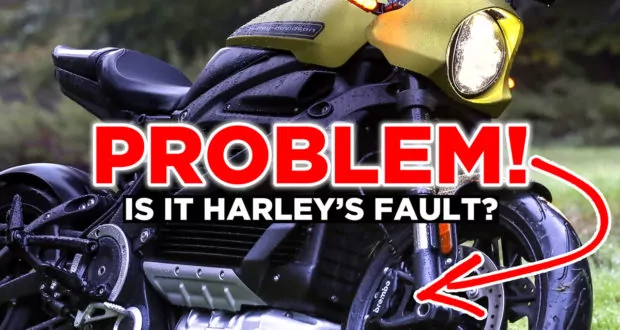Electric motorcyle regenerative braking is a constant state of improvement. The Harley-Davidson LiveWire comes equipped with regenerative braking, as do many of its electric motorcycle competitors. However, the regenerative brakes could be improved on. Honda has a new plan to improve electric motorcycle regenerative braking, and it could change motorcycling forever.
Mike W. asked “Does the (Harley-Davidson) LiveWire have regenerative brakes?” The short answer is yes. The long answer is yes, but, there are two problems that electric motorcycles have regenerative braking: Limited weight and speed, and limited efficiency.


The first problem of regenerative braking in electric motorcycles
Stopping requires energy. Regenerative braking works by recapturing that energy and putting into motion. Think about a train traveling at hundreds of kilometers. Now think about how much energy would be needed to bring it to a stop.
Italy’s Frecciarossa trains are designed to travel up to 250 miles per hour (400 kilometers per hour) and weigh roughly 500 tonnes. If you like abstract units, that’s about four and a half blue whales! Stopping a train takes a lot of energy because of how much trains weigh, and how quickly they travel. The heavier and faster something is, the more energy is needed to make it come to a stop.
And that brings us to the problem with regenerative braking in motorcycles: the average electric motorcycles don’t weigh that much, and their top speeds aren’t all that fast either. Let’s compare a new 2021 Harley-Davidson LiveWire with an old 2006 Harley-Davidson V-Rod.
2021 Harley-Davidson LiveWire: 562 pound (255 kg) weight, 95-110 mph (177 km/hr) top speed
2006 Harley-Davidson V-Rod: 620 pound (281 kg) weight, 153 mph (246 km/hr) top speed
Sure there are faster electric motorcycles, and there are much faster internal combustion engine motorcycles as well, but this is all a moot point as most of us aren’t riding at our motorcycles’ top speeds. The takeaway from all this is that lighter slower bikes don’t take as much energy to slow down as bigger heavier ones, and therefore an electric motorcycle won’t benefit from regenerative braking as much as my old 7-seater Toyota Highlander SUV did.
The upside, of course, is that it doesn’t take as much energy to get a lightweight electric motorcycle going as it does to get a 500 ton but that’s where we get into the second problem.
Front wheel braking versus wheel rear driving inefficiency
Most of a motorcycle’s braking power comes from the front brake. The problem is that electric motorcycles’ use of the ear wheel for regenerative braking isn’t as efficient as it could be. Honda has been working on how to maximize regenerative braking in anticipation of the company’s first all-electric motorcycle. Based on a new Honda patent, it seems that they are looking at creating a two-wheel drive (2WD) electric motorcycle.
Honda is looking at a hydraulic line option, built into the motorcycle’s front wheel, based on their patent. The entire 2WD system would be operated via two hoses. The hoses would be flexible enough to allow for plenty of turning and steering.
Cycle World has a very thorough review of this, although it concludes that we have no idea whether this will ever see the light of day.
So, does the Harley-Davidson LiveWire have regenerative braking? Is it any good?
Yes, the LiveWire does have regenerative braking and they are quite good by electric motorcycle standards. In fact, it even lets you select the level of regenerative braking that you want to apply. It’s so effective, that it can greatly reduce the wear of brake pads and rotors. This is common among many electric and hybrid vehicles, although being able to select the level of regenerative braking level is a more rare feature.
Yes, heavier vehicles braking will regenerate more power. Of course, those same vehicles will also need more power to get rolling in the first place. Yes, Honda thinks they can do electric motorcycle regenerative braking even better in the future.
We’ll all just have to wait and see what that means, and what, if anything, changes in the future. We already know changes to motorcycle sounds are coming.
Do you have a question you want answered? Leave a comment down below!
 YouMotorcycle Motorcycle Blog – Motorcycle Lifestyle Blog, MotoVlog, Motorcycle Reviews, News, & How-Tos
YouMotorcycle Motorcycle Blog – Motorcycle Lifestyle Blog, MotoVlog, Motorcycle Reviews, News, & How-Tos

Stopping doesn’t require a lot of energy, it requires converting kinetic energy to something else. Normal brakes convert kinetic energy to heat, and it doesn’t take all that much energy to squeeze the brakes.